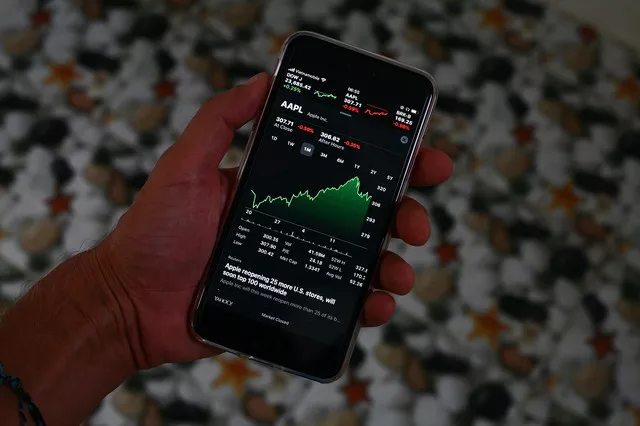Futures trading and forex (foreign exchange) trading are both popular methods for investors and traders to participate in the global financial markets. While they share some similarities, they also have distinct characteristics that set them apart. This article explores the fundamental aspects of futures trading and forex trading, compares their similarities and differences, and provides insights into choosing between these trading instruments based on individual preferences and goals.
Understanding Futures Trading
What is Futures Trading?
Futures trading involves buying and selling standardized contracts that obligate the buyer to purchase an underlying asset (such as commodities, indices, or currencies) at a predetermined price and time in the future. These contracts are traded on regulated exchanges, and they facilitate price discovery and risk management for market participants.
Key Features of Futures Trading
1. Standardized Contracts: Futures contracts have standardized specifications regarding the underlying asset, quantity, quality, and delivery date.
2. Leverage: Futures trading often involves trading on margin, allowing traders to control a larger position with a smaller upfront investment.
3. Regulated Exchanges: Futures contracts are traded on regulated exchanges such as the Chicago Mercantile Exchange (CME), where prices are transparent and market integrity is maintained.
4. Clearinghouse: A clearinghouse acts as an intermediary to guarantee the performance of futures contracts, reducing counterparty risk.
5. Variety of Assets: Futures contracts are available on a wide range of assets including commodities (e.g., oil, gold), stock indices (e.g., S&P 500), and currencies (e.g., Euro, Japanese Yen).
Understanding Forex Trading
What is Forex Trading?
Forex trading involves buying and selling currencies in the foreign exchange market. Traders speculate on the price movements of currency pairs, such as EUR/USD or USD/JPY, with the goal of profiting from fluctuations in exchange rates.
Key Features of Forex Trading
1. High Liquidity: The forex market is the largest and most liquid financial market globally, with daily trading volumes exceeding trillions of dollars.
2. 24-Hour Market: Forex trading operates 24 hours a day, five days a week, allowing for continuous trading across different time zones.
3. Leverage: Similar to futures trading, forex trading offers leverage, enabling traders to control larger positions with a smaller amount of capital.
4. Decentralized Market: Forex trading takes place over-the-counter (OTC), meaning transactions occur directly between counterparties or through electronic trading platforms rather than on a centralized exchange.
5. Currency Pairs: Forex trading involves trading currency pairs, where one currency is exchanged for another at an agreed-upon exchange rate.
See Also: Is It Good to Invest in Gold Futures?
Similarities Between Futures and Forex Trading
1. Leverage:
Both futures and forex trading offer leverage, allowing traders to amplify their trading positions with borrowed funds. Leverage enhances profit potential but also increases risk exposure.
2. Speculative Trading:
Both markets attract speculative traders who aim to profit from price movements in the underlying assets (commodities, currencies) without taking physical ownership.
3. Risk Management:
Both futures and forex markets provide tools for risk management, including stop-loss orders, limit orders, and hedging strategies to protect against adverse price movements.
4. Global Accessibility:
Both markets are accessible globally through online trading platforms, enabling traders from around the world to participate in trading activities.
5. Price Discovery:
Both markets contribute to price discovery, where supply and demand dynamics determine the market-clearing price for the underlying assets.
Differences Between Futures and Forex Trading
1. Underlying Assets:
Futures trading involves contracts based on physical commodities (e.g., oil, wheat), financial instruments (e.g., stock indices), or currencies. Forex trading exclusively deals with currency pairs.
2. Market Structure:
Futures trading occurs on centralized exchanges with standardized contracts and regulated clearinghouses. Forex trading, on the other hand, operates in a decentralized OTC market without a central exchange.
3. Trading Hours:
Futures markets have specific trading hours dictated by the exchange’s schedule. Forex markets operate continuously from Sunday evening to Friday evening (UTC), reflecting global time zone differences.
4. Cost Structure:
Costs associated with futures trading typically include commissions, exchange fees, and margin costs. Forex trading costs are often limited to spreads (the difference between bid and ask prices), as there are no exchange fees or commissions in the traditional sense.
5. Regulatory Environment:
Futures trading is subject to regulatory oversight by governmental bodies and exchanges to ensure market integrity and investor protection. Forex trading regulations vary by jurisdiction, with some regions having stricter oversight than others.
Choosing Between Futures and Forex Trading
Factors to Consider:
1. Risk Tolerance: Futures trading may involve higher volatility and margin requirements compared to forex trading. Consider your risk tolerance and ability to manage potential losses.
2. Trading Style: Determine whether you prefer trading physical commodities and financial derivatives (futures) or focusing solely on currency pairs (forex).
3. Market Conditions: Evaluate current market conditions, including liquidity, volatility, and trading hours, to choose the market that aligns with your trading strategy.
4. Cost Considerations: Compare trading costs, including spreads, commissions, and margin requirements, to assess the affordability and profitability of each market.
5. Regulatory Environment: Familiarize yourself with the regulatory environment in your jurisdiction and choose markets that offer transparency and investor protection.
Conclusion
Futures trading and forex trading are distinct financial markets with their own set of characteristics, advantages, and challenges. While both markets offer opportunities for profit through speculative trading and leverage, they differ in terms of underlying assets, market structure, trading hours, cost structure, and regulatory oversight. Understanding these differences is essential for traders seeking to capitalize on market opportunities while managing risk effectively. Whether you choose futures trading or forex trading depends on your trading preferences, risk tolerance, and investment objectives. By gaining a comprehensive understanding of each market’s dynamics and factors influencing trading decisions, you can make informed choices that align with your financial goals.


